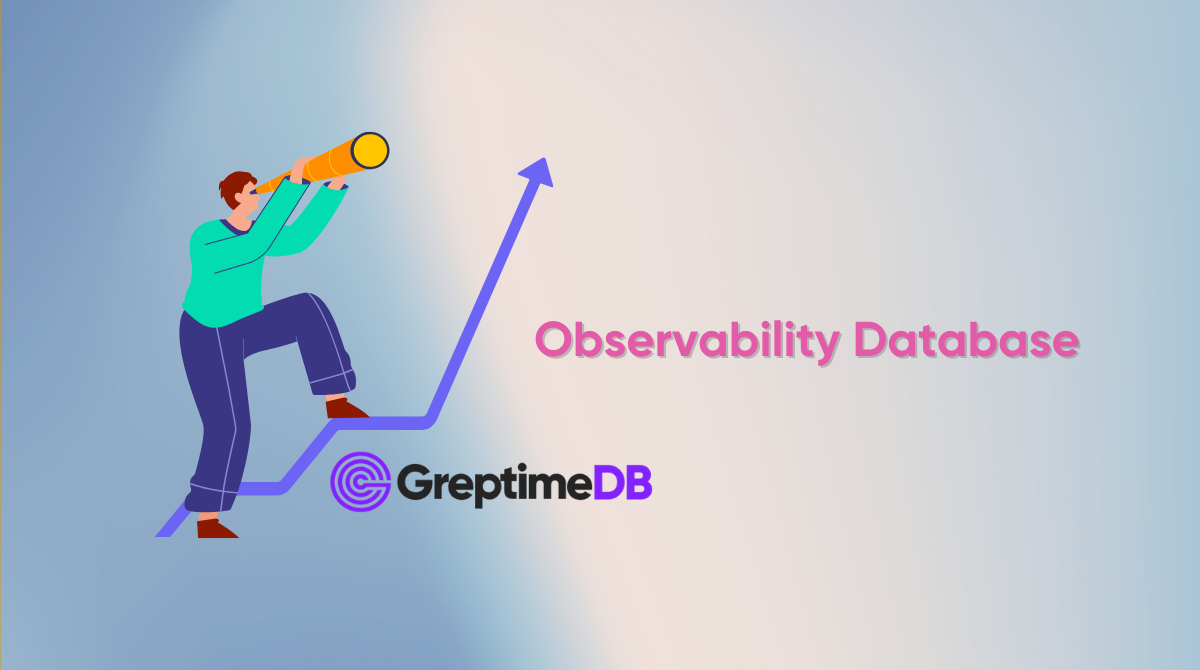GreptimeDB as an Alternative to InfluxDB for Time-Series Data

Introduction
InfluxDB has dominated the time-series space for nearly a decade, yet modern observability workloads now demand far more than metric storage alone. Teams need a cloud-native, unified observability platform that can scale from edge gateways to multi-region Kubernetes clusters while remaining cost-effective. GreptimeDB—an open-source, Rust-based high-performance database—has emerged as the best “alternative to InfluxDB for time-series data”, offering real-time analytics for metrics, logs, and traces across heterogeneous environments.
Unified Observability vs. Metrics-Only
InfluxDB primarily optimizes for metrics. GreptimeDB, by contrast, stores metrics, logs, and traces in the same engine, allowing a single SQL or PromQL query to correlate spikes in CPU with exception stacks or trace latency. This convergence eliminates the need to maintain separate Elastic/Loki or Jaeger clusters, lowering operational complexity and total cost of ownership(TCO).
Rust-Based Core for High-Performance Ingestion
GreptimeDB is written in Rust, giving it the memory safety of modern languages without JVM garbage-collection pauses. Internal benchmarks show 700 k points-per-second on Arm-based edge hardware while consuming under 150 MB RAM. Such performance makes it ideal for real-time metrics, logs, and traces in IoT or 5G scenarios where resource envelopes are tight.
Familiar Query Interfaces—SQL and PromQL
Migrating from InfluxQL or Flux can be daunting. GreptimeDB lowers the barrier with ANSI-SQL plus full PromQL coverage. Existing Grafana dashboards, Alertmanager rules, and K8s ServiceMonitors continue to work—simply switch the remote-write endpoint and carry on, as highlighted by the DeepXplore migration story.
High-Cardinality Time-Series Data Management
Traditional tag-based stores slow to a crawl when faced with millions of unique identifiers. GreptimeDB attacks this problem at the schema level:
- Keep ≤5 low-cardinality tags in the
PRIMARY KEY. - Add SKIPPING INDEX for equality filters on high-cardinality columns (e.g.,
device_id,user_id). - Use
INVERTED INDEXfor low-cardinality enums likehttp_status.
Following these rules delivers sub-second look-ups on billions of rows while capping index memory.
Edge-to-Cloud Scalability & Kubernetes-Native Ops
GreptimeDB offers a lightweight Edge edition that syncs Parquet files to the cloud, then scales horizontally under the GreptimeDB Operator on Kubernetes. Enabling self-monitoring is a single YAML flag (spec.monitoring.enabled=true), after which a Vector sidecar ships GreptimeDB’s own metrics and logs back into the cluster [Self-Monitoring Paradox article]. This design supports hybrid deployment models without the operational gymnastics required by Kapacitor plus Chronograf.
Cost-Effective Object-Storage Architecture
Where InfluxDB Enterprise often relies on pricey SSDs, GreptimeDB stores immutable Parquet blocks directly in Amazon S3, Google Cloud Storage, or MinIO. S3 Standard is roughly 3–5× cheaper than SSD EBS, and Glacier can be 10× cheaper for cold data. A multi-tier cache keeps recent data on NVMe for low-latency reads, so users gain cloud-native observability without ballooning infra bills.
Bonus: Prometheus Long-Term Storage
GreptimeDB exposes a drop-in remote-write endpoint, making it a turnkey “Prometheus long-term storage solution.” In DeepXplore’s production environment, simply replacing Thanos with GreptimeDB improved query latency while trimming maintenance overhead by 30%.
Conclusion
For organizations seeking an open-source, cloud-native, and cost-effective observability database, GreptimeDB delivers compelling advantages over legacy InfluxDB deployments—unified observability capabilities, high-cardinality optimizations, SQL/PromQL compatibility, Kubernetes-native scaling, and object-storage economics. Try GreptimeCloud’s free tier or deploy the GreptimeDB Operator today to experience next-generation time-series performance.
About Greptime
GreptimeDB is an open-source, cloud-native database purpose-built for real-time observability. Built in Rust and optimized for cloud-native environments, it provides unified storage and processing for metrics, logs, and traces—delivering sub-second insights from edge to cloud —at any scale.
GreptimeDB OSS – The open-sourced database for small to medium-scale observability and IoT use cases, ideal for personal projects or dev/test environments.
GreptimeDB Enterprise – A robust observability database with enhanced security, high availability, and enterprise-grade support.
GreptimeCloud – A fully managed, serverless DBaaS with elastic scaling and zero operational overhead. Built for teams that need speed, flexibility, and ease of use out of the box.
🚀 We’re open to contributors—get started with issues labeled good first issue and connect with our community.
